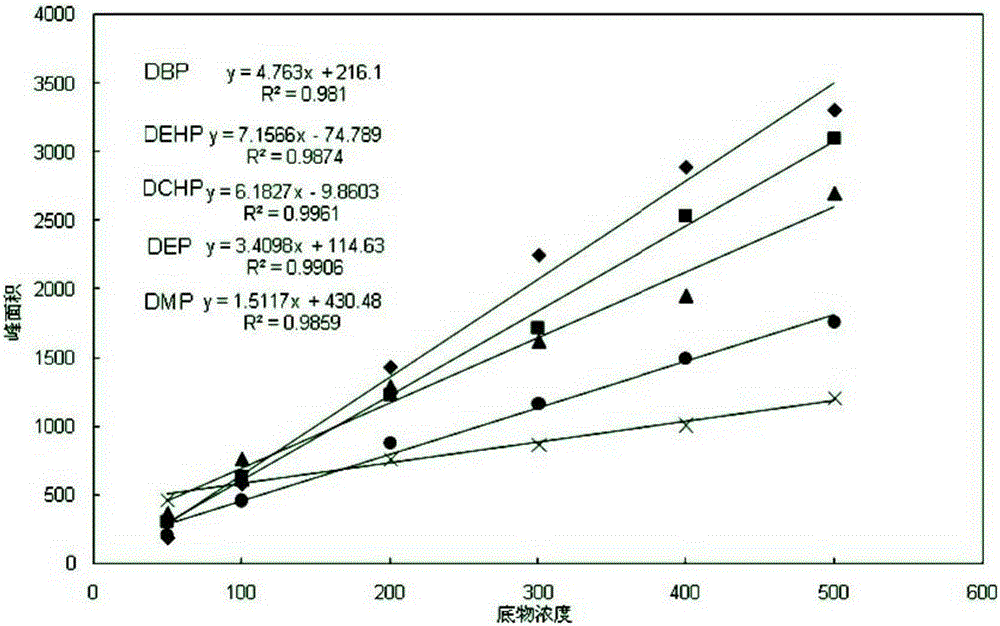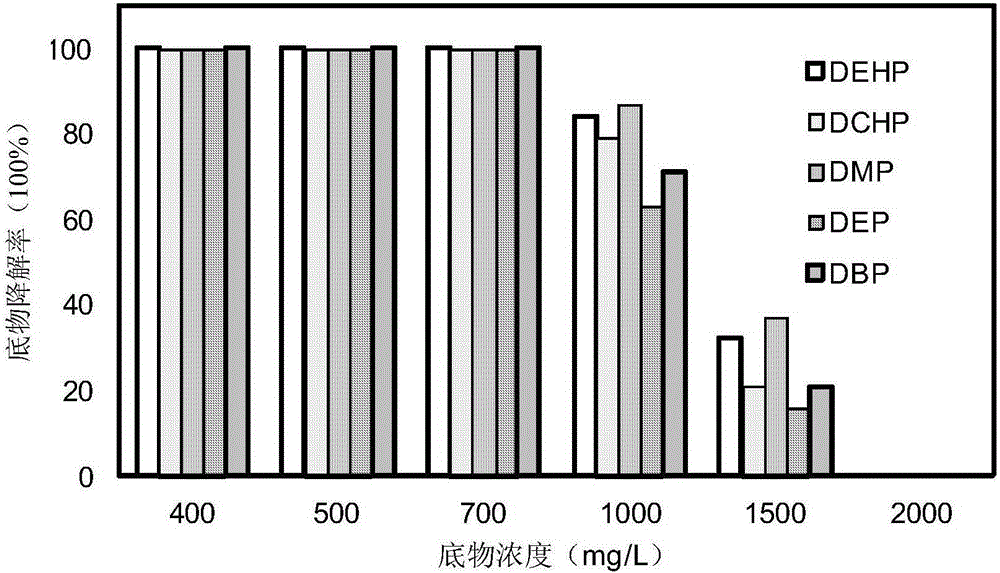Gardenia alkanivorans YC-RL2 and application thereof
A YC-RL2, Alkali Gordonia technology, applied in the direction of bacteria, water/sludge/sewage treatment, biochemical equipment and methods, etc., can solve the problem of low dissolved oxygen, achieve good economic value and application prospects Effect
- Summary
- Abstract
- Description
- Claims
- Application Information
AI Technical Summary
Problems solved by technology
Method used
Image
Examples
Embodiment 1
[0032] Example 1 Isolation and Identification of Gordonia Alkalivora YC-RL2
[0033] 1. Isolation of strains
[0034] Activated sludge samples were collected from oil-contaminated farmland soil in Dongming County, Heze City, Shandong Province. Under aseptic conditions, 5g of activated sludge samples were inoculated into 50mL of inorganic salt ion medium containing 100mg / LDEHP, and cultured at 30°C and 180rpm. After every 7 days of culture, 1 mL was transferred to fresh inorganic salt medium, and transferred 3 times in a row.
[0035]Streak the acclimatized bacterial solution onto an inorganic salt medium plate containing 100mg / LDEHP, and culture in a 30°C incubator for 3 days. Pick a single colony on the plate and transfer it to inorganic salt culture with a concentration of 100mg / LDEHP for 7 days. Repeat three times until a purified strain is isolated, and the strain is named YC-RL2.
[0036] 2. Morphological characteristics of the strain
[0037] The bacterium is Gram-p...
Embodiment 2
[0044] Degradation performance test of embodiment 2 Gordonella alcaliphagus YC-RL2
[0045] 1. Gordonia alcaliphari YC-RL2 di(2-ethylhexyl) phthalate (DEHP), dicyclohexyl phthalate (DCHP), dimethyl phthalate ( DMP), di-n-butyl phthalate (DBP), diethyl phthalate (DEP) degradation
[0046] Gas chromatography (HPLC) was used to detect the degradation of Gordonia alcalivora YC-RL2 on DEHP, DCHP, DMP, DEP and DBP in inorganic salt medium, and the concentration tolerance to DEHP.
[0047] Inoculate strain YC-RL2 into liquid LB medium for activation, and cultivate to logarithmic growth phase OD 600 =0.8, according to the volume ratio of 10% inoculum was inoculated into the inorganic salt medium containing DEHP, DCHP, DMP, DEP and DBP respectively 100mg / L, as the treatment group, with the non-inoculated strain containing DEHP, DCHP, DMP , DEP and DBP each 100mg / L mixture of inorganic salt medium as a control group, the control group and the treatment group were respectively set up t...
Embodiment 3
[0068] Example 3 Application of Alkaliphagous Gordonella YC-RL2 in Bioremediation of Contaminated Soil
[0069] The soil used in this example was obtained from the Ximen Garden of the Chinese Academy of Agricultural Sciences. The Alkalivora Gordonia YC-RL2 was cultured in LB liquid medium to the logarithmic phase (OD600 =0.8, the cell concentration is about 2×10 8 CFU / mL), adding the prepared bacterial solution to the soil to a final concentration of 1×10 4 , 5×10 4 , 1×10 5 , 5×10 5 , 1×10 6 and 5×10 6 CFU / g soil (100g soil for each treatment), and add DEHP, DCHP, DMP, DEP and DBP to the soil respectively to each concentration of 100mg / kg, as a treatment group; meanwhile, add the same concentration under the same conditions Pollutant and non-inoculated soil was used as the control group, and the finally obtained culture system (treatment group and control group) was fully mixed. The samples were cultured in a constant temperature and humidity incubator at 30° C. with a...
PUM
 Login to View More
Login to View More Abstract
Description
Claims
Application Information
 Login to View More
Login to View More - R&D
- Intellectual Property
- Life Sciences
- Materials
- Tech Scout
- Unparalleled Data Quality
- Higher Quality Content
- 60% Fewer Hallucinations
Browse by: Latest US Patents, China's latest patents, Technical Efficacy Thesaurus, Application Domain, Technology Topic, Popular Technical Reports.
© 2025 PatSnap. All rights reserved.Legal|Privacy policy|Modern Slavery Act Transparency Statement|Sitemap|About US| Contact US: help@patsnap.com



